Quadratic Equation Worksheets
Quadratic equation worksheets provide a comprehensive and structured method for students to practice and improve their understanding of quadratic equations. These worksheets are designed to cater to the needs of students studying mathematics at the high school level, particularly those who are grappling with the concept of quadratic equations and need additional practice to strengthen their skills.
Table of Images 👆
- Quadratic Formula Worksheet
- Algebra 2 Quadratic Equations Worksheet
- Factoring Quadratic Equations Worksheet Answers
- Solving Quadratic Equations Worksheet
- Quadratic Formula Worksheet with Answers
- Quadratic Functions and Equations Worksheet
- Quadratic Formula and Discriminant Worksheet
- Factoring Quadratic Equations Worksheet
- Solving Quadratic Equations with Square Roots Worksheet
- Quadratic Word Problems Worksheet
- Graphing Quadratic Equations Worksheet
More Other Worksheets
Kindergarten Worksheet My RoomSpanish Verb Worksheets
Cooking Vocabulary Worksheet
DNA Code Worksheet
Meiosis Worksheet Answer Key
Art Handouts and Worksheets
7 Elements of Art Worksheets
All Amendment Worksheet
Symmetry Art Worksheets
Daily Meal Planning Worksheet
What is a quadratic equation?
A quadratic equation is a type of polynomial equation in which the highest power of the variable is 2. It is typically written in the form ax^2 + bx + c = 0, where a, b, and c are constants and x is the variable. Quadratic equations can have two distinct real roots, one real root (when the discriminant is zero), or two complex roots (when the discriminant is negative).
What are the three forms of a quadratic equation?
The three forms of a quadratic equation are standard form (ax^2 + bx + c = 0), vertex form (a(x-h)^2 + k = 0), and factored form (a(x - r1)(x - r2) = 0), where a, b, c, h, k, r1, and r2 are constants.
How do you solve a quadratic equation by factoring?
To solve a quadratic equation by factoring, you first need to write the equation in the standard form ax^2 + bx + c = 0. Then, factor the quadratic expression into two binomial factors, setting each factor equal to zero. Solve for the values of x from each factor, considering both solutions in the form of x = value and then you have your solutions for the quadratic equation.
How do you solve a quadratic equation using the quadratic formula?
To solve a quadratic equation using the quadratic formula, first identify the coefficients of the quadratic equation in the form of ax^2 + bx + c = 0. Then, substitute these values into the quadratic formula x = (-b ± ?(b^2 - 4ac)) / 2a. Calculate the discriminant (b^2 - 4ac) to determine the number of solutions the equation has. Finally, plug the values back into the formula, considering both the plus and minus signs in the numerator, to find the solutions for x.
What are the key features of a graph of a quadratic equation?
The key features of a graph of a quadratic equation are a parabolic shape, which can either open upwards or downwards, a vertex that represents the minimum or maximum point of the graph, and a line of symmetry that passes through the vertex. The x-intercepts of the graph represent the roots of the quadratic equation, while the y-intercept is where the graph intersects the y-axis. The steepness of the graph is determined by the value of the coefficient in front of the x^2 term in the quadratic equation.
How do you identify if a quadratic equation has one, two, or no real solutions?
You can identify if a quadratic equation has one, two, or no real solutions by looking at the discriminant (?) of the equation, which is the part inside the square root in the quadratic formula. If ? > 0, the equation will have two distinct real solutions; if ? = 0, the equation will have one real solution (a repeated root); and if ? < 0, the equation will have no real solutions (two complex conjugate solutions).
How do you find the vertex of a parabola represented by a quadratic equation?
To find the vertex of a parabola represented by a quadratic equation in the form of y = ax^2 + bx + c, the x-coordinate of the vertex can be calculated using the formula x = -b/2a. Substituting this x-value back into the equation will give you the y-coordinate. Therefore, the vertex of the parabola can be found at the coordinates (x, y).
How do you determine the axis of symmetry for a quadratic equation?
To determine the axis of symmetry for a quadratic equation in the form of y = ax^2 + bx + c, you can use the formula x = -b/(2a). The axis of symmetry is a vertical line that passes through the vertex of the parabola. The x-coordinate of the vertex will be the value of x that you calculate using the formula, and this line will be the axis of symmetry for the parabola represented by the quadratic equation.
How do you use the discriminant to determine the nature of the solutions to a quadratic equation?
The discriminant of a quadratic equation, which is the part of the quadratic formula under the square root sign (b^2 - 4ac), can be used to determine the nature of the solutions to the equation. If the discriminant is greater than 0, there are two distinct real solutions. If the discriminant is equal to 0, there is one real solution, also known as a repeated root. And if the discriminant is less than 0, there are no real solutions but two complex conjugate solutions. By analyzing the value of the discriminant, you can determine whether the quadratic equation has real roots, repeated roots, or complex roots.
How do you solve word problems involving quadratic equations?
To solve word problems involving quadratic equations, first identify all known information and define variables to represent unknown quantities. Then, write a quadratic equation based on the given conditions. Next, simplify the equation by expanding and combining like terms. Finally, solve the quadratic equation using factoring, completing the square, or the quadratic formula. Remember to check your solutions by plugging them back into the original problem to ensure they make sense in the context of the word problem.
Have something to share?
Who is Worksheeto?
At Worksheeto, we are committed to delivering an extensive and varied portfolio of superior quality worksheets, designed to address the educational demands of students, educators, and parents.

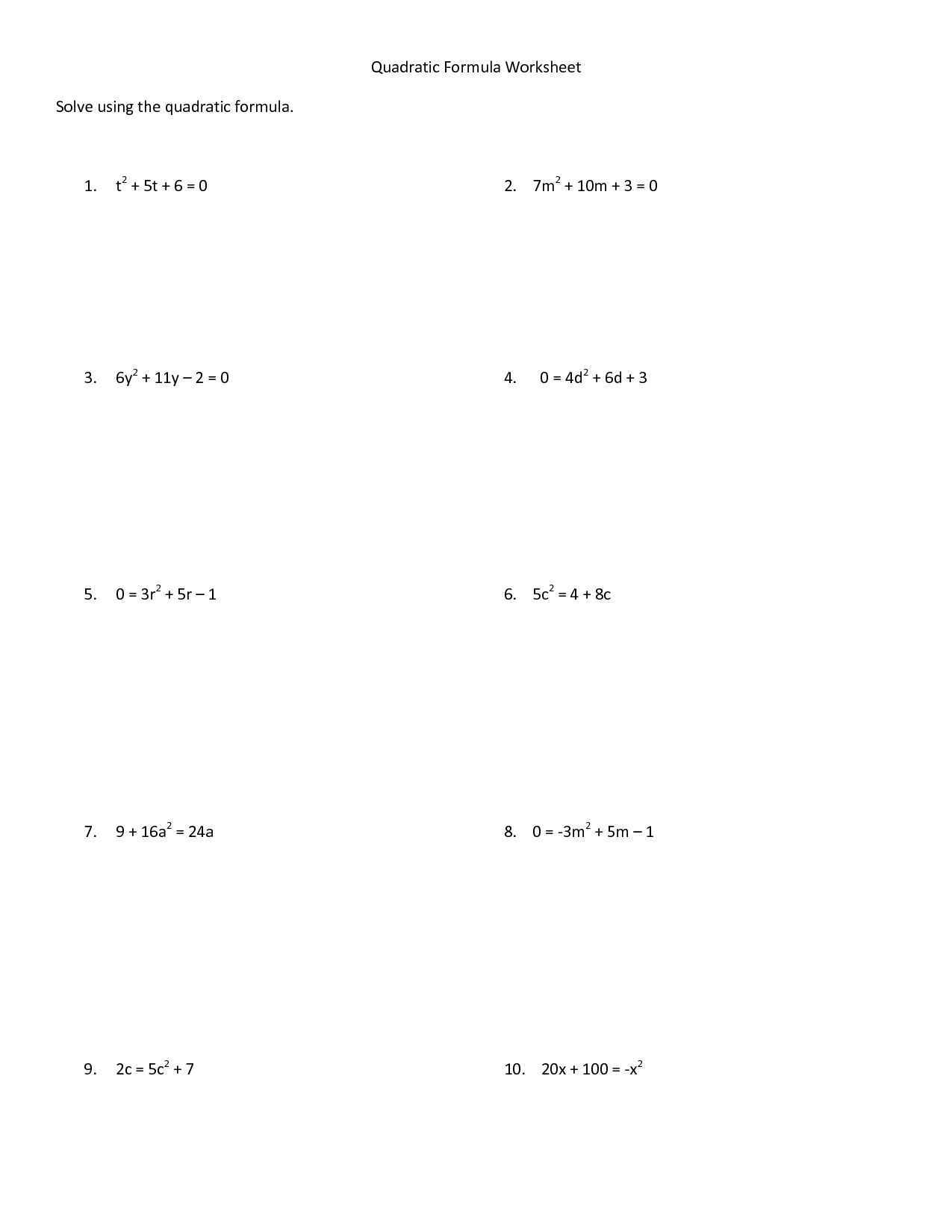



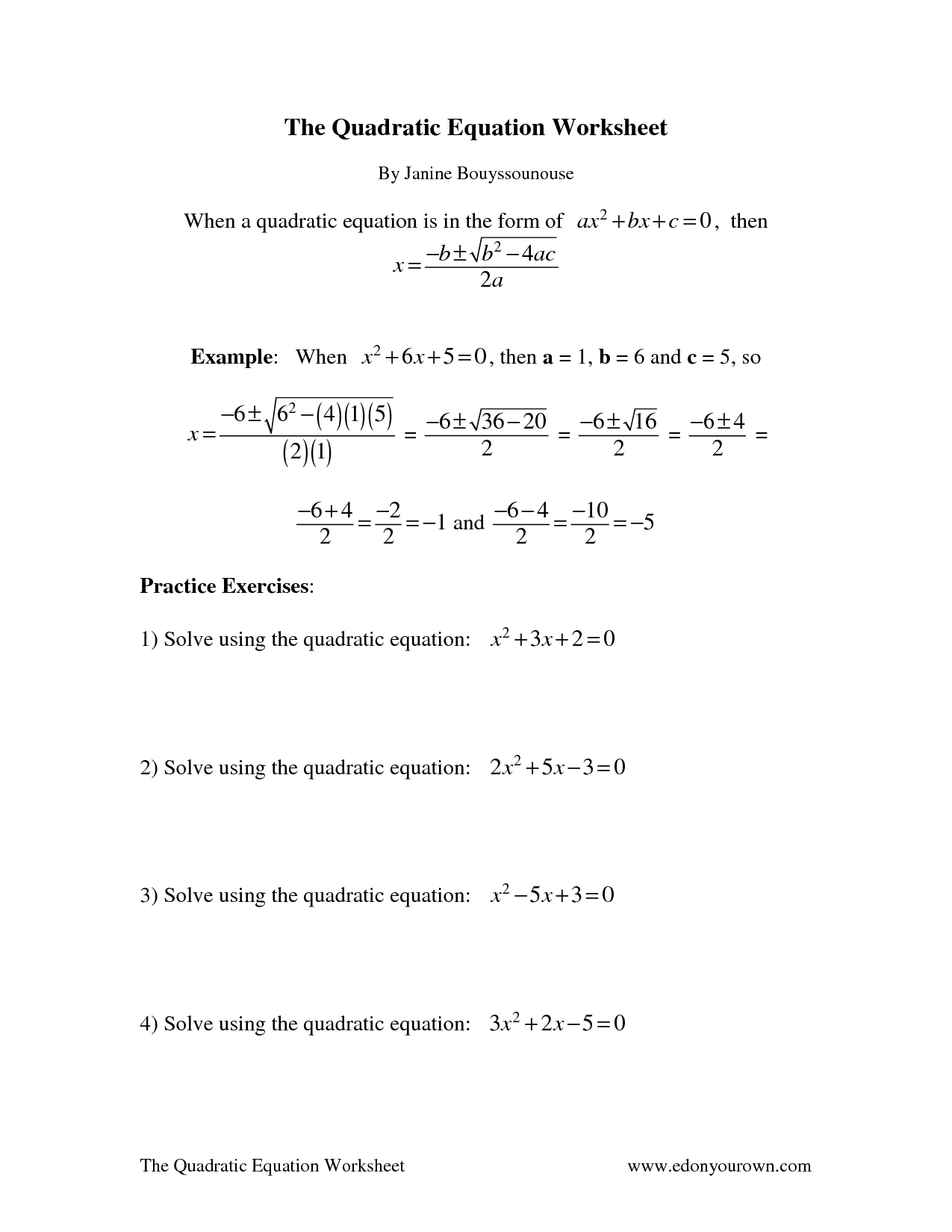

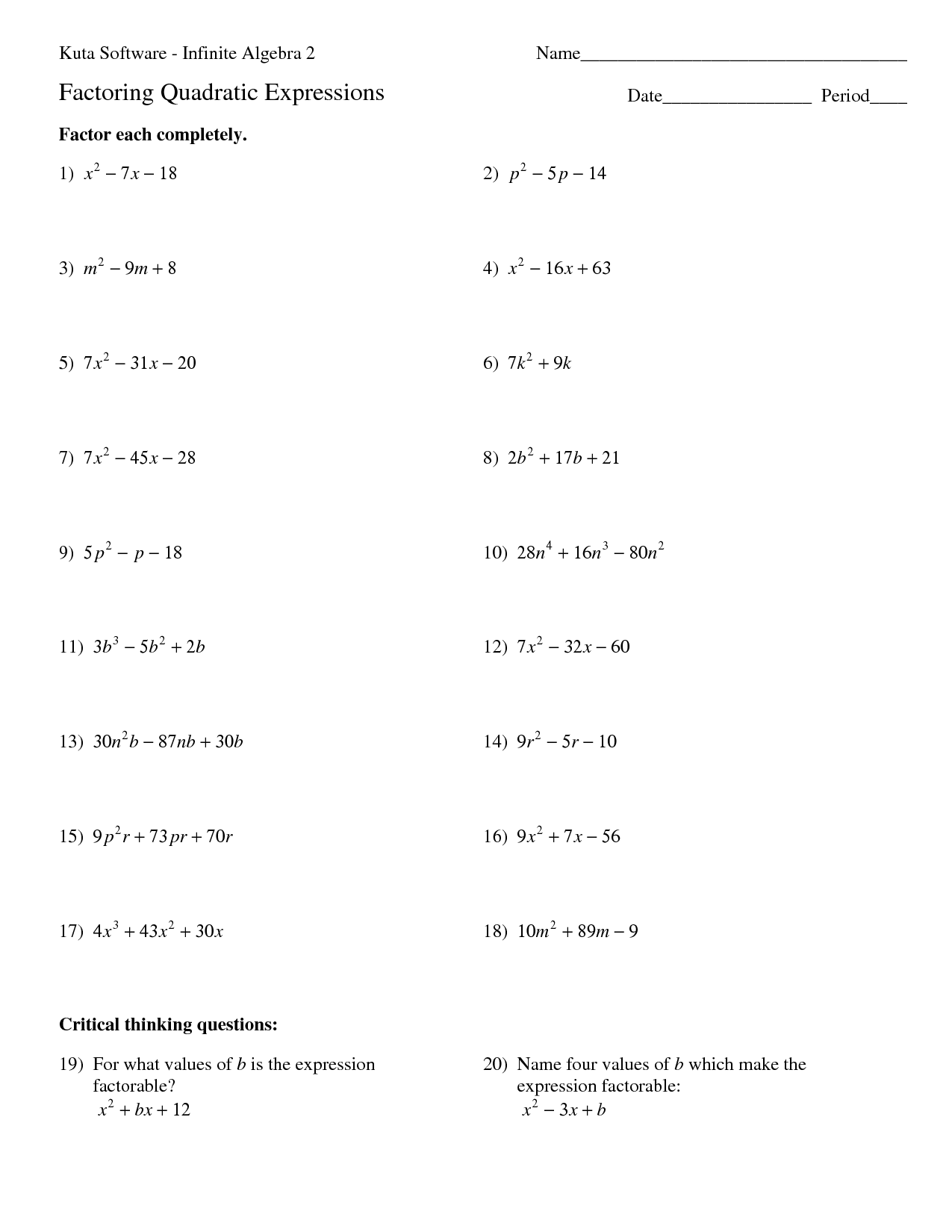

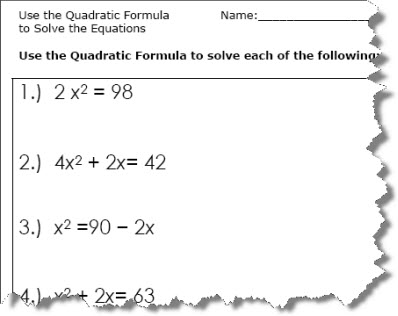
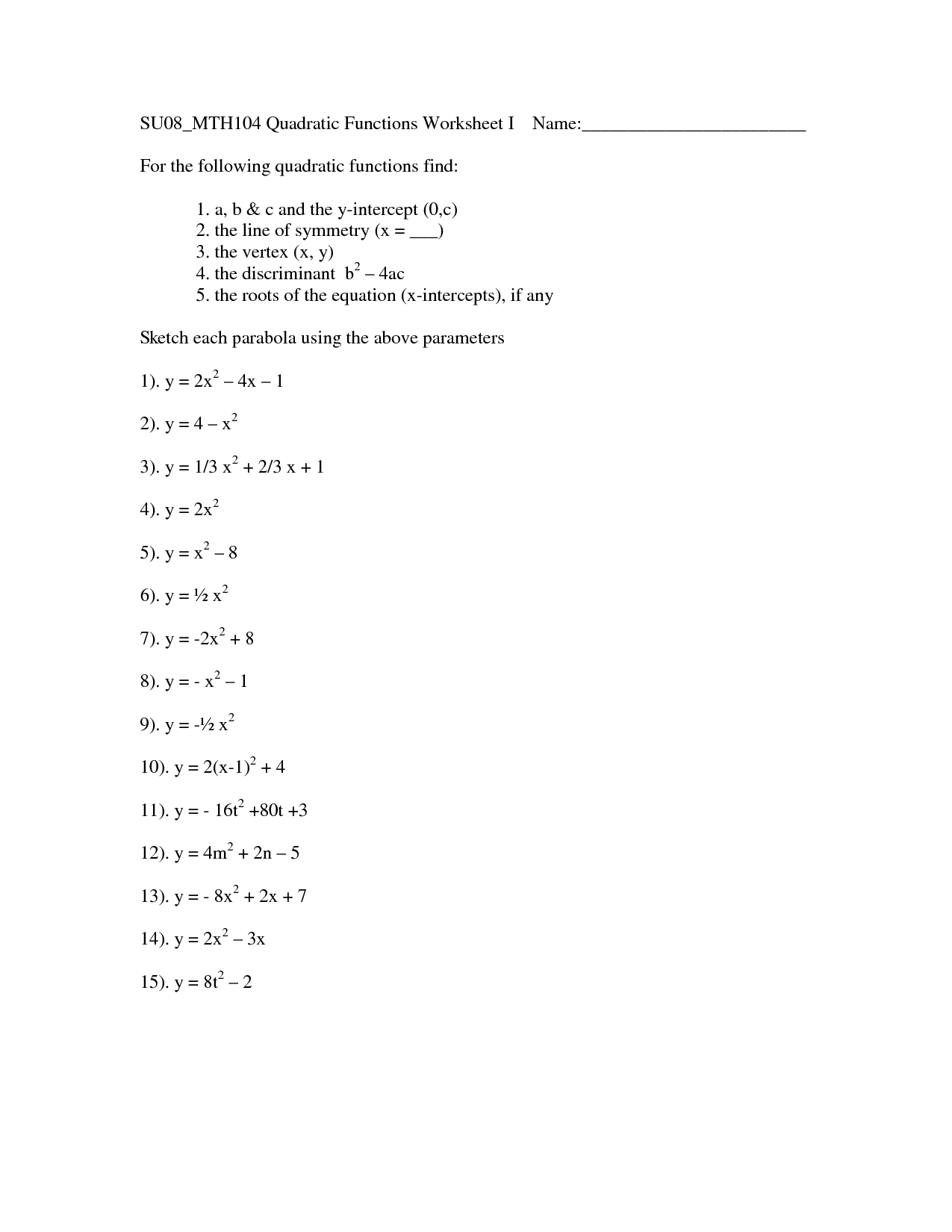
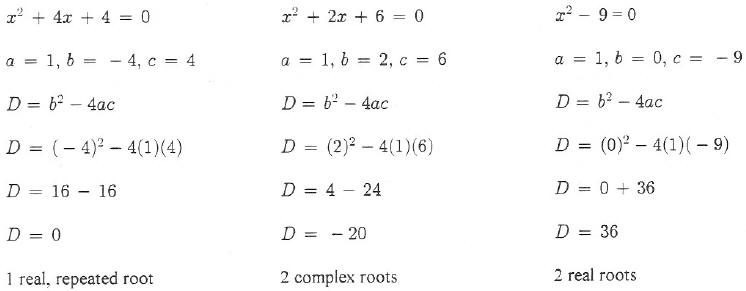
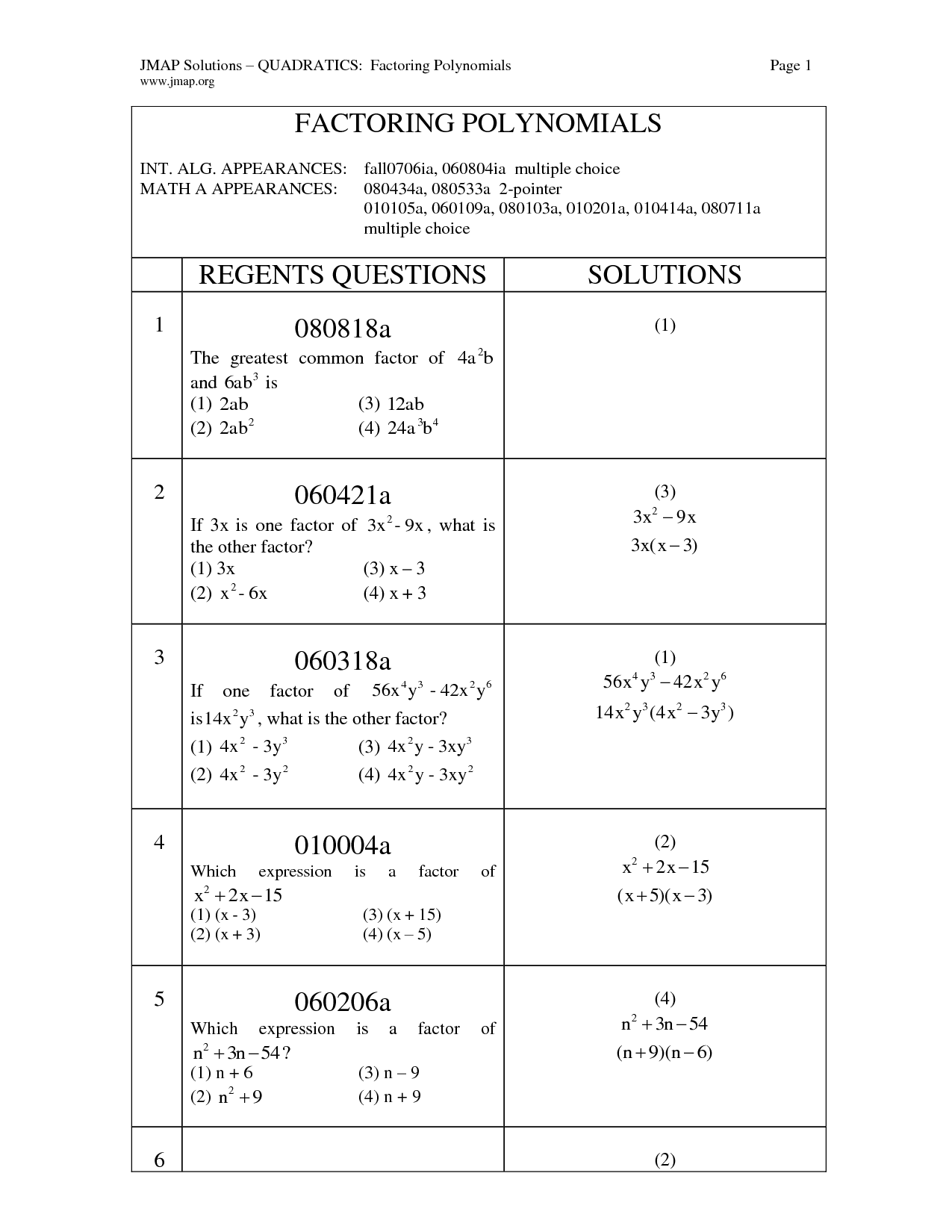
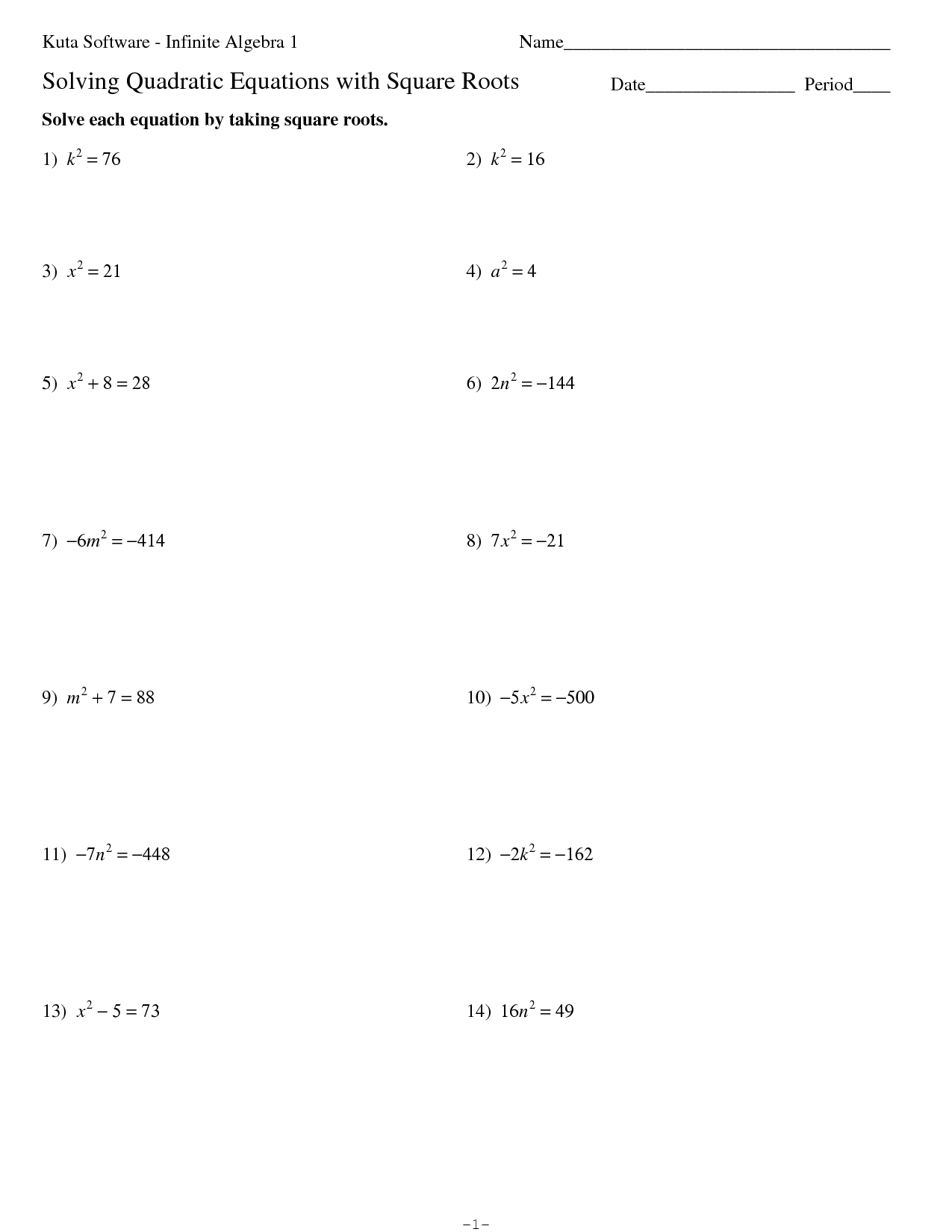
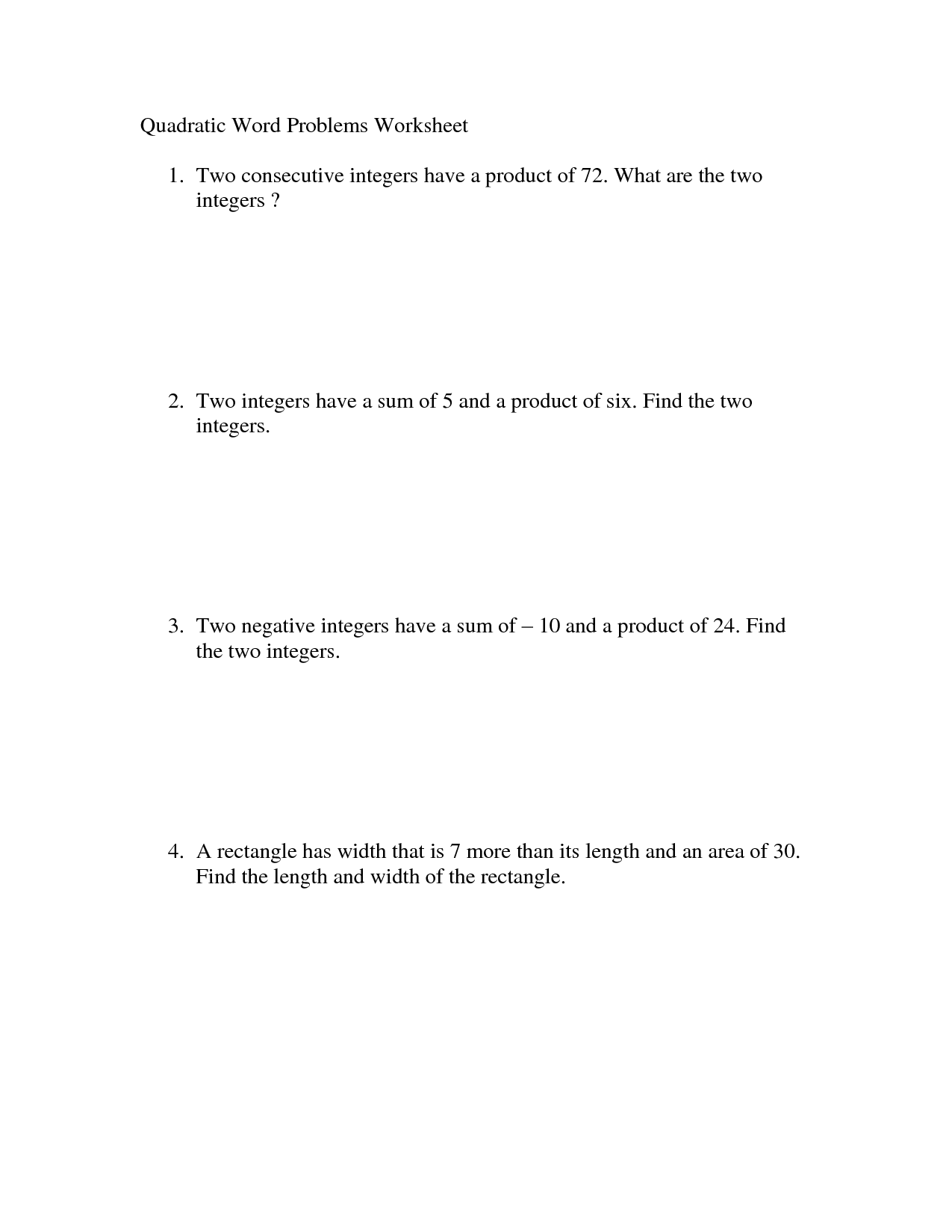















Comments